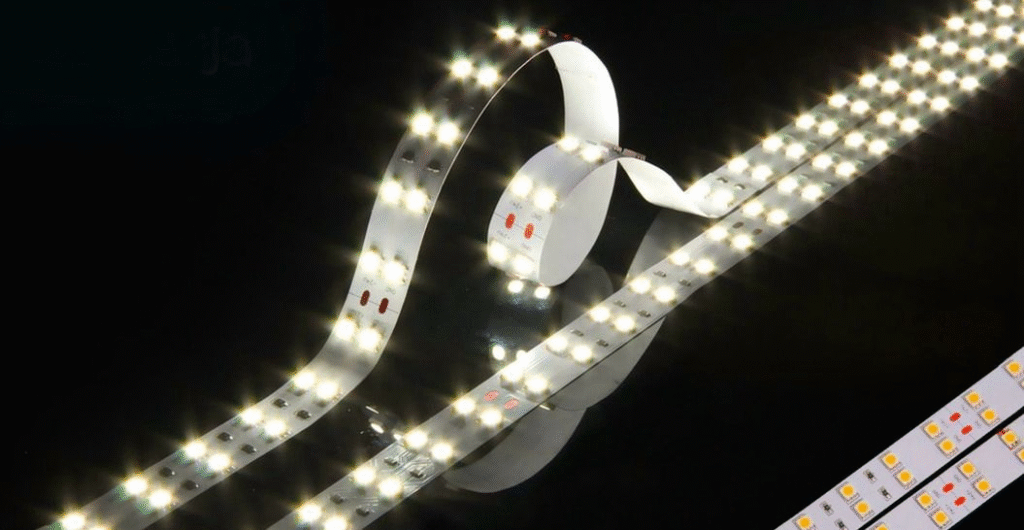
Lighting has come a long way from simple bulbs to intelligent, interconnected systems that adapt to our lifestyles. The future of illumination is smart, efficient, and personalized — led by the remarkable innovation of smart LED lighting systems. LED Power Supply suppliers These systems are transforming how homes, offices, and public spaces are lit, blending technology, energy efficiency, and design to create experiences tailored to human needs.
With advancements in automation, connectivity, and sustainability, smart LEDs are no longer a luxury — they’re becoming an essential component of modern living. Let’s explore what defines the next generation of lighting and how it’s changing the way we interact with our environments.
1. Integration with Smart Homes
The most significant advancement in LED technology is its seamless integration with smart home ecosystems. Through Wi-Fi, Bluetooth, or Zigbee connections, smart LED lights can be controlled via mobile apps, remote devices, or voice assistants.
Imagine dimming your living room lights with a voice command, changing colors to match your mood, or scheduling your lights to turn on automatically as you arrive home. These features not only provide convenience but also promote energy efficiency by ensuring lights operate only when needed.
Homeowners can create “lighting scenes” for specific activities — such as relaxing, reading, or hosting — all customized with a tap or command. This level of personalization enhances comfort while optimizing energy use.
2. Adaptive Lighting for Well-Being
Future smart lighting systems go beyond aesthetics to focus on human health and well-being. Known as human-centric lighting, these systems adjust brightness and color temperature throughout the day to mimic natural daylight.
In the morning, cooler tones help stimulate energy and alertness, while in the evening, warmer hues encourage relaxation and better sleep. This alignment with the body’s circadian rhythm improves mood, productivity, and overall wellness.
Such adaptive lighting is particularly valuable in offices and schools, where proper illumination directly impacts focus and performance.
3. Energy Efficiency and Sustainability
As energy conservation becomes a global priority, smart LED lighting stands at the forefront of eco-friendly solutions. LEDs already consume far less electricity than traditional bulbs, and smart controls take that efficiency even further.
Sensors can automatically adjust light levels based on occupancy or natural sunlight, preventing unnecessary power use. For large buildings, integrated lighting management systems can track energy consumption and optimize performance in real-time.
Combined with renewable energy sources, smart LED systems represent a major step toward sustainable living and green building standards worldwide.
4. Customization and Mood Control
Smart LED lighting offers endless creative possibilities for both residential and commercial spaces. Users can choose from millions of colors and dynamic lighting effects to set the perfect mood for any occasion.
For instance, a living room can transform from a calm, candlelit retreat to a vibrant entertainment zone with a single tap. Restaurants can switch between soft dining ambiance and lively event lighting effortlessly. In retail spaces, lighting can subtly guide customer attention toward featured products or seasonal displays.
The future of lighting is emotional — designed to make people feel connected, inspired, and comfortable.
5. Integration with IoT and Artificial Intelligence
As part of the Internet of Things (IoT), smart LED systems are becoming increasingly intelligent. AI-driven lighting can learn user habits and automatically adjust settings for maximum comfort and efficiency.
For example, a system may learn your daily routine — turning on lights gradually in the morning, dimming them in the afternoon, and switching to soft tones at night. In offices, AI can analyze workspace patterns to optimize illumination for productivity and energy savings.
These intelligent systems will soon integrate seamlessly with climate control, security, and entertainment, forming a unified, responsive environment.
6. Commercial and Urban Applications
The future of smart LED lighting extends far beyond homes. Businesses, hotels, and even cities are adopting smart lighting for operational and environmental benefits.
In offices, adjustable lighting enhances employee well-being and reduces energy costs. Retail stores use dynamic lighting to enhance product visibility and influence purchasing behavior. Smart streetlights in cities can automatically adjust brightness based on traffic or pedestrian activity, improving safety while saving energy.
These applications highlight how smart LEDs are not just improving personal spaces but also contributing to smarter, more sustainable communities.
7. The Aesthetic Evolution of Light
Technology and art are merging in the world of lighting design. Smart LEDs enable creative expression through color, form, and motion. From minimalist architectural lines to interactive light installations, design possibilities are expanding rapidly.
As more designers embrace LED technology, lighting is becoming an integral part of visual storytelling — one that blends form, function, and emotion.
Conclusion
Smart LED lighting systems represent the future of illumination — intelligent, sustainable, and deeply connected to human experience. By combining automation, energy efficiency, and artistic freedom, they redefine how we interact with light in our daily lives.
From enhancing productivity in offices to creating warmth and comfort at home, smart LEDs are more than a convenience — they’re a symbol of progress toward a connected, eco-conscious future. As technology continues to evolve, the light of tomorrow won’t just brighten spaces; it will elevate the way we live, work, and feel.